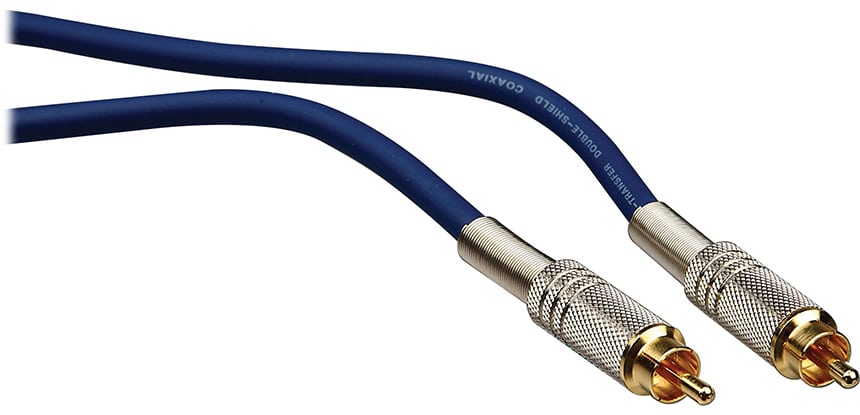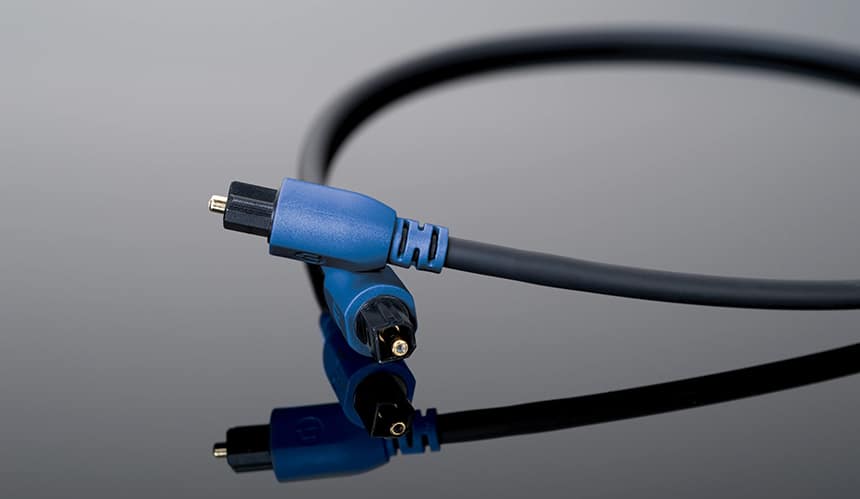There are different types of audio connections available to interconnect your devices. The most common way is through cables. Today, we’ll be putting two types of cables against one another, namely, RCA S/PDIF vs TOSLINK.
These cables are able to provide the best audio experience. However, these two differ in the way they function. While S/PDIF is a digital coaxial cable, the TOSLINK serves as a digital optical cable.
This article will compare S/PDIF vs TOSLINK and enlist the properties and applications for each type of cable. This will help you make a decision on which audio cable best suits your needs.

S/PDIF Trusted Source S/PDIF - Wikipedia S/PDIF (Sony/Philips Digital Interface) is a type of digital audio interconnect used in consumer audio equipment to output audio over reasonably short distances. The signal is transmitted over either a coaxial cable with RCA connectors or a fiber optic cable with TOSLINK connectors. S/PDIF interconnects components in home theaters and other digital high-fidelity systems. en.wikipedia.org or the Sony/Philips Digital Interconnect Format is a piece of audio equipment that is able to connect devices over a short distance. These digital coaxial cables are basically multi-core wires that are used to transport audio signals over devices. These cables are often coated and shielded in a way that prevents the loss of audio signals. This is done to ensure that high audio quality is achieved throughout the outputs.
In order to transport the signal, the S/PDIF usually makes use of RCA connectors. The S/PDIF is usually capable of carrying uncompressed audio over two channels. However, it cannot transform audio with high bandwidths.
S/PDIF wires are used commonly to connect your DVD player or computer to different types of speakers. It can also be used in home theatres and studio monitors to enhance sound quality while watching a movie. You will also see the use of S/PDIF wires while trying to connect two amplifiers together.
Similar to the AES3 audio equipment, the S/PDIF comes with a bi-phase mark code modulation. Its audio bit depth can reach up to 20 bits or even 24 bits, in some cases. Using RCA connectors or TOSLINK, the S/PDIF is able to connect different devices with its 75-ohm cabling.
On the other hand, we have TOSLINK or the Toshiba Link. TOSLINK is used to connect audio over different devices using an optical fiber connecter system. The connector is able to carry audio signals from different devices to an AV receiver.
This AV receiver is then responsible for decoding the signal and producing audio output. TOSLINK is often known to support different kinds of media inputs. As useful as they might sound, TOSLINK connectors have different advantages as well as drawbacks as listed below:

When it comes to TOSLINK cables, there are many advantages such as:
As great as a TOSLINK might sound, it comes with several drawbacks as well:
When comparing RCA connectors to S/PDIF connectors, you might see that while they may look similar, the two are quite different from one another. For example, one main difference between the two is that RCA is analog while the S/PDIF is a digital form of connection.
Now that we have seen the difference between RCA and S/PDIF connectors, lets compare TOSLINK vs S/PDIF connectors:
If you’re looking to get one of these, it’s time to think about which one you should choose for your particular setup.
The answer to this question depends on your requirements and on what you seek through these cables. If you are looking for a high-quality audio option, then you should opt for TOSLINK connectors. These connectors transmit audio signals without any interference or loss, maintaining the audio quality. The connectors are also compatible with a wide range of devices, so you can find a lot of uses for them. However, the cable can be fragile and requires care while handling.
If you are someone who is looking for reliable and durable audio performance, then you should opt for S/PDIF connectors. These type of coaxial cables are made up of copper which means that they are less prone to any kind of damage. While these wires can be challenging or tough to handle, the wires are able to last you through long periods of time, without needing any replacement.
Now that you know the differences between S/PDIF vs TOSLINK, you can pick the one that suits your needs in the best way possible!